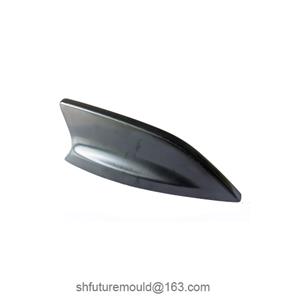Assembly Tools for Precision Injection Molds
The assembly of precision injection molds requires high-quality tools. Proper tools not only improve work efficiency but also ensure assembly accuracy.
Manual Tools
1. Hex Keys (Allen Wrenches)
Purpose: Used for tightening or loosening hex socket bolts. Many fasteners in-mold assembly, such as those for mold bases, cores, and cavities, use hex bolts. Hex keys of various sizes ensure proper tightening for optimal fastening.
2. Adjustable Wrenches
Purpose: Suitable for tightening or loosening nuts and bolts of various sizes. They are particularly useful for non-standard sizes or when fixed-size wrenches cannot be used in tight spaces. The adjustable jaw allows for flexibility and convenience in operation.
3. Screwdrivers (Phillips and Flathead)
Purpose: Used for installing or removing screws with Phillips or flathead slots. These are often used for securing small components, covers, or electrical parts, such as screws for mold temperature controller housings or small locating blocks.
Example: When installing a temperature sensor in the mold’s cooling system, a Phillips screwdriver may be used to secure the sensor bracket.
Measuring Tools
1. Calipers
Purpose: Calipers are commonly used to measure the length, width, height, and diameter of parts. In precision mold assembly, they are essential for checking whether mold components meet the design specifications.
Accuracy: Standard calipers have an accuracy of 0.02 mm or 0.05 mm, suitable for general measurements. For higher precision requirements, digital calipers with an accuracy of 0.01 mm are recommended.
2. Micrometers
Purpose: Micrometers are used for precision measurements of external diameters, internal diameters, and lengths. They are more accurate than calipers, with a typical accuracy of 0.001 mm. In mold assembly, they are commonly used to measure critical dimensions, such as the diameters of guide pins and guide sleeves or the size of precision cores.
3. Dial Indicators
Purpose: Dial indicators are used to measure shape and positional errors, such as flatness, parallelism, and perpendicularity. During mold assembly, they are essential for checking the parallelism of mold plates and the perpendicularity of cores and cavities.
Auxiliary Tools
1. Copper Rods
Purpose: Copper rods are used for tapping mold components during fine adjustments or installation. Their soft material prevents damage to the surface of mold parts.
2. Parallel Clamps
Purpose: Parallel clamps are used to fix and align mold components. For example, they can hold ejector pins in place during installation. Additionally, they help maintain alignment between parts during assembly, ensuring precision.
3. Press Machines
Purpose: Press machines are used for pressing mold components into place, such as guide sleeves into the top mold plate or cores into templates. A press machine allows precise control of pressing force and speed, reducing the risk of deformation or damage caused by manual handling.




